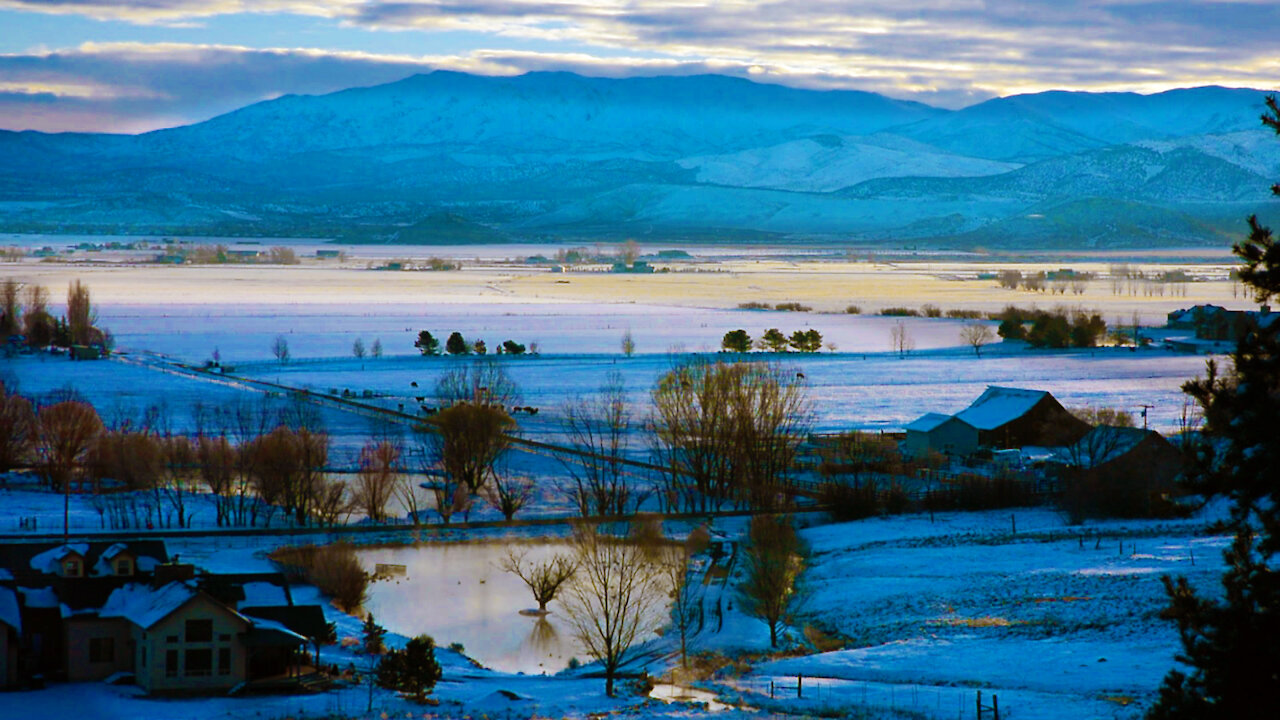Premium Only Content

Sierra Nevada sunrise. Winter time-lapse
Staying with some friends in Gardnerville, Nevada, we’re so close to the California border that we can see it from our kitchen window.
The farmers are out early every morning in the winter, driving their ATV’s and dropping off hay for the animals.
The vast majority of the Sierra Nevada mountain range lies in the state of California, although the Carson Range spur lies primarily in Nevada. The Sierra Nevada is part of the American Cordillera, an almost continuous chain of mountain ranges that forms the western "backbone" of the Americas.
The Sierra runs 400 miles (640 km) north-south and is approximately 70 miles (110 km) across east-west. Notable features include General Sherman, the largest tree in the world by volume; Lake Tahoe, the largest alpine lake in North America; Mount Whitney at 14,505 ft (4,421 m), the highest point in the contiguous United States; and Yosemite Valley sculpted by glaciers from one-hundred-million-year-old granite, containing high waterfalls. The Sierra is home to three national parks, twenty wilderness areas, and two national monuments. These areas include Yosemite, Sequoia, and Kings Canyon National Parks; and Devils Postpile National Monument.
More than one hundred million years ago during the Nevadan orogeny, granite formed deep underground. The range started to uplift four million years ago, and erosion by glaciers exposed the granite and formed the light-colored mountains and cliffs that make up the range. The uplift caused a wide range of elevations and climates in the Sierra Nevada, which are reflected by the presence of five life zones (areas with similar plant and animal communities). Uplift continues due to faulting caused by tectonic forces, creating spectacular fault block escarpments along the eastern edge of the southern Sierra.
The Sierra Nevada has played an important role in the history of California and the United States. The California Gold Rush occurred in the western foothills from 1848 through 1855. Due to its inaccessibility, the range was not fully explored until 1912
-
 0:04
0:04
AmplifiedLIFE
1 year ago $0.03 earned“Peep”-ing & Chirping Cardinal
115 -
 9:20
9:20
Tactical Advisor
20 hours agoNew Shadow 2 Carry | CZ Compact Upgrade (FIRST LOOK)
19.2K7 -
 7:55
7:55
Talk Nerdy Sports - The Ultimate Sports Betting Podcast
2 hours ago4/27/25 - Sunday Service: Vasil’s 10 Holy Locks & PrizePicks Resurrection 💥🧠
8.74K1 -
 LIVE
LIVE
Pepkilla
1 hour agoSundayzZzZzZz Wins?
65 watching -
 LIVE
LIVE
Mossy
37 minutes ago🍃PRE HALO PARTY🍃OBLIVION HARDEST DIFFICULTY🍃COME CHILL🍃420 SESH🍃GAMING🍃REACTIONS🍃MORE????🍃
46 watching -
 18:15
18:15
World2Briggs
10 hours ago $11.15 earned10 Cities That Are Slowly Emptying Like a Sad Party
25.4K21 -
 11:34
11:34
Mrgunsngear
19 hours ago $6.03 earnedSiege Suppressors ROC556 Low Backpressure Silencer Review 🤫
18.9K5 -
 30:57
30:57
Clownfish TV
6 hours agoDisney Drops DEI and Goes PRO-AMERICA?!
23.6K28 -
 17:35
17:35
QNewsPatriot
19 hours ago(4/25/2025) | AUDIO CHAT 166 | SG Sits Down w/ Sovereign Radio Founder Scotty Saks: Vaxx Lawsuits and the #NeverAgain Telethon
31.2K16 -
 19:51
19:51
CatfishedOnline
4 hours agoSpouse Sends $50,000 To A Man Who Doesn't Exist 😱
21.1K2